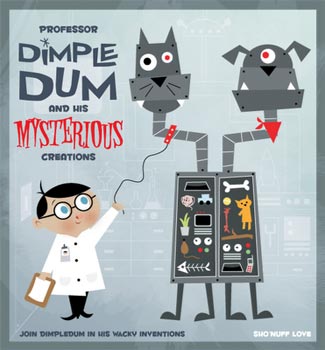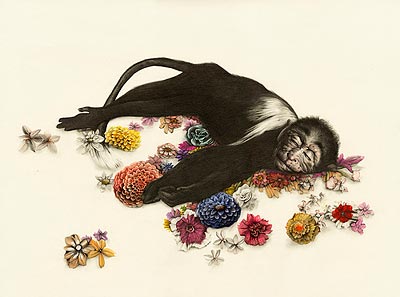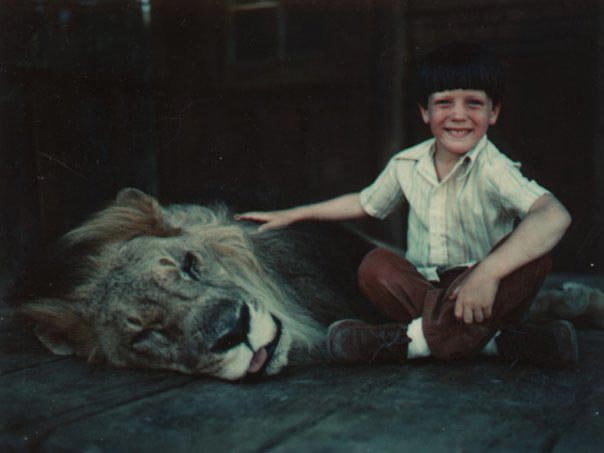December’s death or glory how you want it?

Copyright infringement has stirred the souls of artists and publishers since the time of Charles Dickens, who went to the United States in 1842 to ask the Americans to stop pirating his works.
His books were being reprinted there without his receiving a penny, but the Americans told him to jump in the lake.
How the world has changed. Now America’s a bastion for the defence of copyright and the country that once rejected international copyright laws is relentless in enforcing them.
However, 2009 might have marked the year when the enforcers lost valuable ground. (…)
Technology has forced the change, one in which there is no turning back.
related { confessions of a book pirate }
I has a hotdog but I eated it

{ For almost three years now, this has been Ben Huh [the 32-year-old founder of the humor-blog startup Cheezburger Network]’s life: to pore over millions of JPEGs and YouTube clips in search of Internet memes — those absurd running gags that hatch and proliferate on the Web seemingly overnight — and figure out which of these quick-hit laughs might yield long-term profits. | Wired | Full story }
Every day, the same, again

A man has been banned from a public park after he allegedly tried to have sex with a tree.
Artificial hymens sold $38 at China border.
Man arrested after he tried to break into jail.
Travolta flies aid, scientologists to Haiti.
eHarmony forced to merge gay, straight dating sites In discrimination lawsuit.
We’re working twice as much than we’re supposed to be working for half the money. 24% of workers say they no longer feel loyal to their current employer and 19% plan to move to a new job this year.
Ripping apart smart-phones reveals their true cost.
What makes a man take credit for a crime he didn’t commit?
Early risers are more proactive than evening people.
What your sleep position says about you.
Losing sleep, losing brain? The more severe the sleeping problems of insomniacs, the less grey matter density they have in the region involved in pleasantness evaluation, which may also be important for the recognition of optimal comfort to fall asleep.
The 7 psychological principles of scams: protect yourself by learning the techniques.
 Single cells in the monkey brain encode abstract mathematical concepts.
Single cells in the monkey brain encode abstract mathematical concepts.
A Swedish study concludes that children with a high IQ have a reduced risk of mortality as adults.
Brain size predicts success at video games.
How a lack of control leads to superstition.
Caucasians and Asians don’t examine faces in the same way, according to new research.
Does information about calories reduce calorie consumption? Yes.
Why we should not return to the Moon.
The disappearing snows of Everest.
A library of the world’s most unusual compounds.
Ten plants that put meat on their plates. In addition to the well-known Venus flytrap, many other plant species feed on bugs or crustaceans
Ten venture capitalist predictions for 2010.
How we will (or won’t) survive without newspaper.
Ozzy Osbourne: “Well, believe me, I didn’t sit down and put pen to fucking paper. I’d still be writing the first page. I got a ghostwriter.”
The literary masters of misery who delight in desolation.
Spike Jonze’s new short film trailer. Unrelated: Shark in Venice trailer.
 New York City has highest life expectancy in recorded city history, new data show.
New York City has highest life expectancy in recorded city history, new data show.
For night riders, finding peace on sleepy streets.
The evolution of skateboarding in New York City.
The Wall Street Ex-Wives Club.
Did you know that something like 85 percent of women are wearing the wrong size bra?
How do women bargain differently?
The 3 Facebook settings every user should check now. Realted: Conversation with a Facebook employee.
The 6 most statistically full of shit professions.
Most labels are misleading, sometimes grossly so.
When a toilet atop the Sears Tower is flushed, do the contents fall 110 floors?
How to make your own bedbug detector.
Then curl up in the bliss

Work and boredom.– Looking for work in order to be paid: in civilized countries today almost all men are at one in doing that. For all of them work is a means and not an end in itself. Hence they are not very refined in their choice of work, if only it pays well. But there are, if only rarely, men who would rather perish than work without any pleasure in their work. They are choosy, hard to satisfy, and do not care for ample rewards, if the work itself is not the reward of rewards. Artists and contemplative men of all kinds belong to this rare breed, but so do even those men of leisure who spend their lives hunting, traveling, or in love affairs and adventures. All of these desire work and misery if only it is associated with pleasure, and the hardest, most difficult work if necessary. Otherwise, their idleness is resolute, even if it spells impoverishment, dishonor, and danger to life and limb. They do not fear boredom as much as work without pleasure; they actually require a lot of boredom if their work is to succeed. For thinkers and all sensitive spirits, boredom is that disagreeable “windless calm” of the soul that precedes a happy voyage and cheerful winds. They have to bear it and must wait for its effect on them. Precisely this is what lesser natures cannot achieve by any means. To ward off boredom at any cost is vulgar, no less than work without pleasure.
{ Nietzsche, The Gay Science, 42, 1882 | Read more: Wikipedia }
‘The human mind has no knowledge of the body.’ –Spinoza

The relationship between emotions and rationality is one that has preoccupied man for thousands of years. As the ancient Stoics said, the emotions typically involve the judgement that harm or benefit is at hand (Sorabji 2006). Already, then, there was thought to be a relationship between emotions and ‘judgement’, the latter implying a degree of rationality. But Sorabji, a philosopher, also points out that the mere intellectual appreciation of benefit or harm does not constitute emotion, but there must be some physiological disturbance: disembodied emotion is not meaningful. Yet the physiological reactions involved in emotions are typically thought of, since the development of evolutionary theory, as something of more primitive origins than reasoning. One reaction to this would be to argue that emotions govern actions that are urgent and essential to survival, whereas reasoning is dispassionate and calculating. (…)
To understand the usefulness of neuroscience in examining the rationality of decision-making, it is worth looking at an example. Current neurological research shows that people with orbitofrontal cortical lesions have difficulties in anticipating the negative emotional consequences of their choices. People with healthy brains, however, seem to take account of these emotions, which are mediated through and are consistent with counterfactual thinking in the assessment of choice alternatives (Bechara et al. 1994). More generally, results from psychological and neurological research show that emotions and affective states are not just sources of biased judgements, but may also serve as essential functions leading to more appropriate choices.
{ Alan Kirman, Pierre Livet and Miriam Teschl | Continue reading | More: Theme Issue ‘Rationality and emotions’ | The Royal Society B }
photo { Ansen Seale }
And on the cool check in
What do we know about the relationship between mental illness and jazz?
A review of biographical material of 40 famous jazz musicians of the period from 1945 to 1960 excluding those who were still alive, was studied and rated for psychiatric diagnoses according to the DSM IV classification.
Results:
• 10% (4) had family psychiatric disorder
• 17,5% (7) had unhappy or unstable early lifes
• 52,5% (21) were addicted to heroin some time during their lives.
• 27,5 (11) were dependent on alcohol and 15% (6) abused alcohol
• 8% (3) were dependent on cocaine
• 8% (3) had psychotic disorder
• 28,5% (11) had mood disorders
• 5% (2) had anxiety disorders
• 17,5% (7) had sentsation seeking tendencies such as disinhibition and thrill and adventure seeking. This has been linked to borderline personality disorder
• 2 killed themselfs later in life
When the music’s over, turn out the lights

{ The 4 big myths of profile pictures: It’s better to smile, You shouldn’t take your picture with your phone or webcam, Guys should keep their shirts on, Make sure your face is showing. | OK Trends | Full story }
Tony: [Showing Tramp the menu] Now, tell me, what’s your pleasure? A la carte? Dinner? [Tramp barks] Aha, Okay. Hey, Joe! Butch-a he say he wants-a two spaghetti speciale, heavy on the meats-a ball.

It should come to no surprise that restaurant owners adjust their menus to increase check totals overall and to promote the items that bring in the most profit. We told you earlier today that when there were no dollar signs on the menu, customers spent more.
As Dave Pasegic of the Restaurant Resource Group notes, a menu …
is the only piece of printed advertising that you are virtually 100 percent sure will be read by the guest. Once placed in the guest’s hand, it can directly influence not only what they will order, but ultimately how much they will spend.
And the strategies used to promote high-profit items are very intriguing.
People don’t read menus from top to bottom — or at least, their gaze doesn’t necessarily linger at the top. For example ….
… the National Restaurant Association recommends that chefs place the dishes they want to sell on the center of the inside right page of their menu.
photo { Terry Richardson }
And Martha all I had was you and all you had was me

Physicists and cosmologists have long noted that the laws of physics seem remarkably well tuned to allow the existence of life, an idea known as the anthropic principle.
It is sometimes used to explain why the laws of physics are the way they are. Answer: because if they were different, we wouldn’t be here to see them.
To many people, that looks like a cop out. One problem is that this way of thinking is clearly biased towards a certain kind of carbon-based life that has evolved on a pale blue dot in an unremarkable corner of the cosmos. Surely there is a more objective way to explain the laws of physics.
Enter Raphael Bousso and Roni Harnik at the University of California, Berkeley and Stanford University respectively. They point out that the increase in entropy in any part of the Universe is a decent measure of the complexity that exists there. Perhaps the anthropic principle can be replaced with an entropic one?
Today, they outline their idea and it makes a fascinating read. By thinking about the way entropy increases, Bousso and Harnik derive the properties of an average Universe in which the complexity has risen to a level where observers would have evolved to witness it.
photo { Jocelyn Lee }
Miss Maggie M’Gill, she lived on a hill

{ In 1999 ‘Prozac’ – the trade name of fluoxetine – was named on of the ‘Products of the century’ by Fortune magazine. In 2007 Eli Lilly began to market fluoxetine for dogs under the name Reconcile. In this incarnation it’s chewable, tastes like beef and is intended to treat something called ‘canine separation anxiety’. | Frontier Psychiatrist | Continue reading }
‘I look at models like a farmer looks at his potatoes.’ –Helmut Newton
The brain processes fearful faces more quickly when seen out of the corner of the eye than when viewed straight on. Dimitri Bayle and colleagues, who made their finding using magnetoencephalography (MEG) brain scanning, believe this bias has probably evolved because threats are more likely to come from side-on.
If only tonight we could sleep in a bed made of flowers

I stopped eating pork about eight years ago, after a scientist happened to mention that the animal whose teeth most closely resemble our own is the pig. Unable to shake the image of a perky little pig flashing me a brilliant George Clooney smile, I decided it was easier to forgo the Christmas ham. A couple of years later, I gave up on all mammalian meat, period. I still eat fish and poultry, however and pour eggnog in my coffee. My dietary decisions are arbitrary and inconsistent, and when friends ask why I’m willing to try the duck but not the lamb, I don’t have a good answer. Food choices are often like that: difficult to articulate yet strongly held. (…)
But before we cede the entire moral penthouse to “committed vegetarians” and “strong ethical vegans,” we might consider that plants no more aspire to being stir-fried in a wok than a hog aspires to being peppercorn-studded in my Christmas clay pot.
Plants are lively and seek to keep it that way. The more that scientists learn about the complexity of plants — their keen sensitivity to the environment, the speed with which they react to changes in the environment, and the extraordinary number of tricks that plants will rally to fight off attackers and solicit help from afar — the more impressed researchers become, and the less easily we can dismiss plants as so much fiberfill backdrop, passive sunlight collectors on which deer, antelope and vegans can conveniently graze. (…)
Just because we humans can’t hear them doesn’t mean plants don’t howl. Some of the compounds that plants generate in response to insect mastication — their feedback, you might say — are volatile chemicals that serve as cries for help. Such airborne alarm calls have been shown to attract both large predatory insects like dragon flies, which delight in caterpillar meat, and tiny parasitic insects, which can infect a caterpillar and destroy it from within.
illustration { Kirsty Whiten }
Riders on the storm, into this house we’re born
Bayesian probability is a great model of rationality that gets lots of important things right, but there are two ways in which its simple version, the one that comes most easily to mind, is extremely misleading.
One way is that it is too easy to assume that all our thoughts are conscious – in fact we are aware of only a tiny fraction of what goes on in our minds, perhaps only one part in a thousand. We have to deal with not only “running on error-prone hardware”, but worse, relying on purposely misleading inputs. Our subconscious often makes coordinated efforts to mislead us on particular topics. (…)
We may see one part in a thousand of our minds, but that fraction pales by comparison to the fact that we are each only one part in seven billion of living humanity.
Taking this fact seriously requires even bigger changes to how we think about rationality. OK, we don’t need to consider it for topics that only we can influence. But for most interesting important topics, it matters far more what the entire world does than what we personally do.
‘The sadness will last forever.’ –Van Gogh
Tom alerted me to this fantastic brief case published in the British Medical Journal where a builder is admitted to hospital in great pain after a nail penetrated all the way through his boot. But it turned out that the pain was entirely psychological, as the nail had missed his foot by sliding between his toes. (…)
This isn’t really the nocebo effect, where ’side-effects’ appear after having taken nothing but a placebo, but more similar to what doctors might describe in its persistent form as somatisation disorder where physical symptoms appear that aren’t explained by tissue damage.
Are you a lucky little lady in the City of Light, or just another lost angel

A paper by Mark Grinblatt and two Finnish guys whose names I can’t pronounce (Linnainmaa & Keloharju), took data from Finnish military IQ tests, and combined them with transactional data on the Helsinki Stock Exchange. The paper is cleanly titled, “Do Smart Investors Outperform Dumb Investors?”
From the abstract:
This study analyzes whether high IQ investors exhibit superior investment performance. It combines equity return, trade, and limit order book data with two decades of scores from an intelligence test administered to nearly every Finnish male of draft age. Controlling for wealth, trading frequency, age, and determinants of the cross-section of stock returns on each day, we find that high IQ investors exhibit superior stock-picking skills, particularly for purchases, which earn up to 11% more per year than the purchases of below average IQ nvestors.
photo { Justine Reyes }
‘There’s hell, there’s darkness, there’s the sulphurous pit, burning, scalding, stench, consumption; fie, fie, fie! pah, pah!’ —Shakespeare

Abstract painting is nearing its centenary. Although what exactly abstraction is, who first achieved it, and when and where, are questions open to interpretation, the best art-historical thinking dates its inception to around 1912, when Wassily Kandinsky, Kazimir Malevich, Robert Delaunay, Piet Mondrian and Arthur Dove quite separately made their breakthroughs across two continents. (…)
It would be easy to make the argument that abstraction has long since settled into its comfortable dotage–that it has become an art choking on good taste and mannered reticence. On this view, abstraction was deposed by movements of the 1960s such as Pop Art, with its rehabilitation of vernacular imagery and its immersion in demotic culture; Conceptual Art, with its emphasis on language and critical context; and even Minimalism, which (despite its inheritance from the Constructivist strain within abstraction) laid such great stress on what its foremost detractor decried as mere “objecthood” that a boundary was fatally breached between art and everyday things.
artwork { Mark Rothko, No. 14, 1960 }
Trying to figure out where you are and where you’re going

‘Grid cells’ that act like a spatial map in the brain have been identified for the first time in humans, according to new research by UCL scientists which may help to explain how we create internal maps of new environments. (…)
Grid cells represent where an animal is located within its environment, which the researchers liken to having a satnav in the brain.
photo { Jocelyn Lee }
Noon burn gold into our hair
{ The notion that the speed of thought could be measured, just like the density of a rock, was shocking. Yet that is exactly what scientists did. | Discover | Full story }









